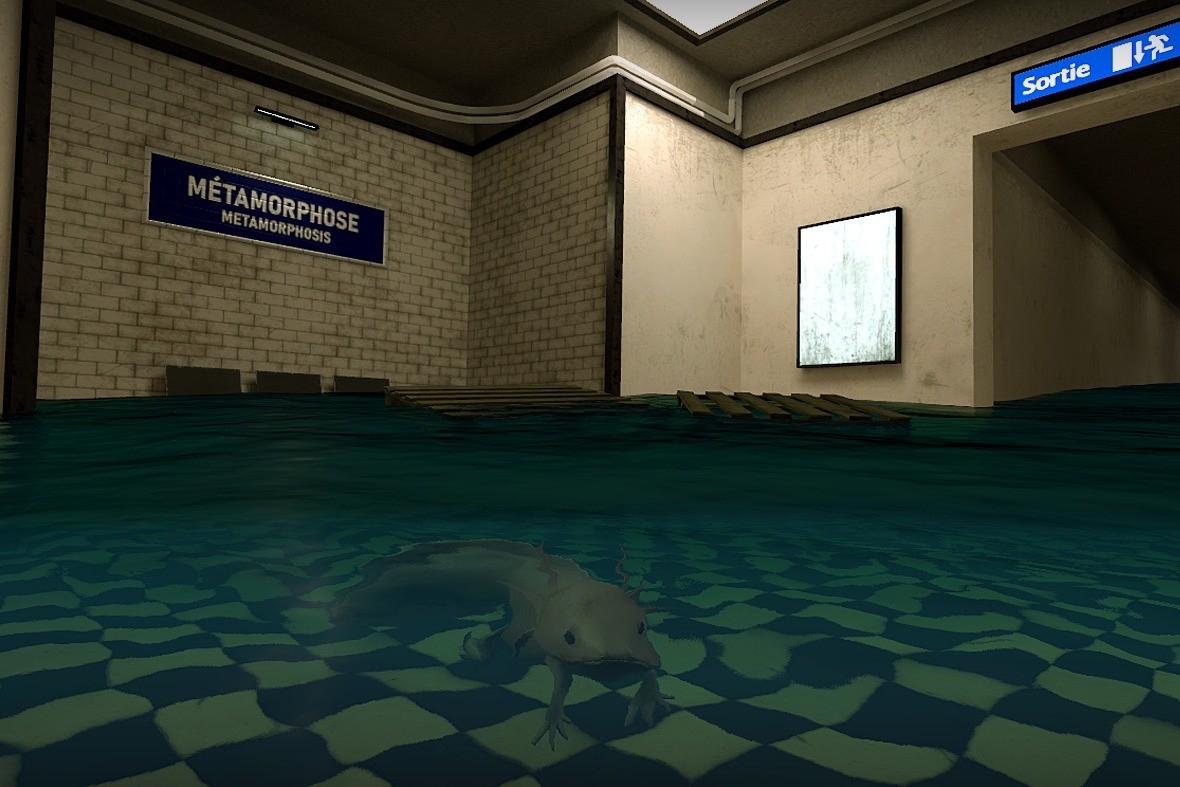In the work designed for the Oksasenkatu 11 gallery, which is closely tied to the location, the viewer passes through the actual physical gallery space into a surreal virtual space, at the end of which a transformation awaits. The gallery, divided into two floors, is itself an integral part of the work and turns into a series of subconscious rooms in the virtual world of Axolotl.
Like Cortázar’s Novel, the theme of Axolotl is migration, adaptation to a new environment and the related feeling of alienation. But the axolotl, which lives in the eternal larval stage, can also be thought of as having achieved the naive dream of modern humans: a state of permanent youth. Axolotl explores the border between human and animal. It questions our need to objectify the alien mind under suspicion and scrutiny. An image of an animal is initially displayed, until the arrangement is suddenly turned upside down: the viewer becomes an animal looking at a human.
Teemu Kivikangas is an artist and game designer who lives and works in Uppsala, Sweden. Axolotl is a continuation of previous exhibitions that explored the interface between video games and visual art at the Photo Gallery Hippolyte, MUU Gallery, Titanic Gallery and Galleria Huudo. Kivikangas graduated with a master’s degree in art from the Media Laboratory of the School of Applied Arts. He works as a Senior Game Designer at the renowned Swedish game studio MachineGames and is active in various game subcultures, such as live role-playing games, game jams and indie game development.




